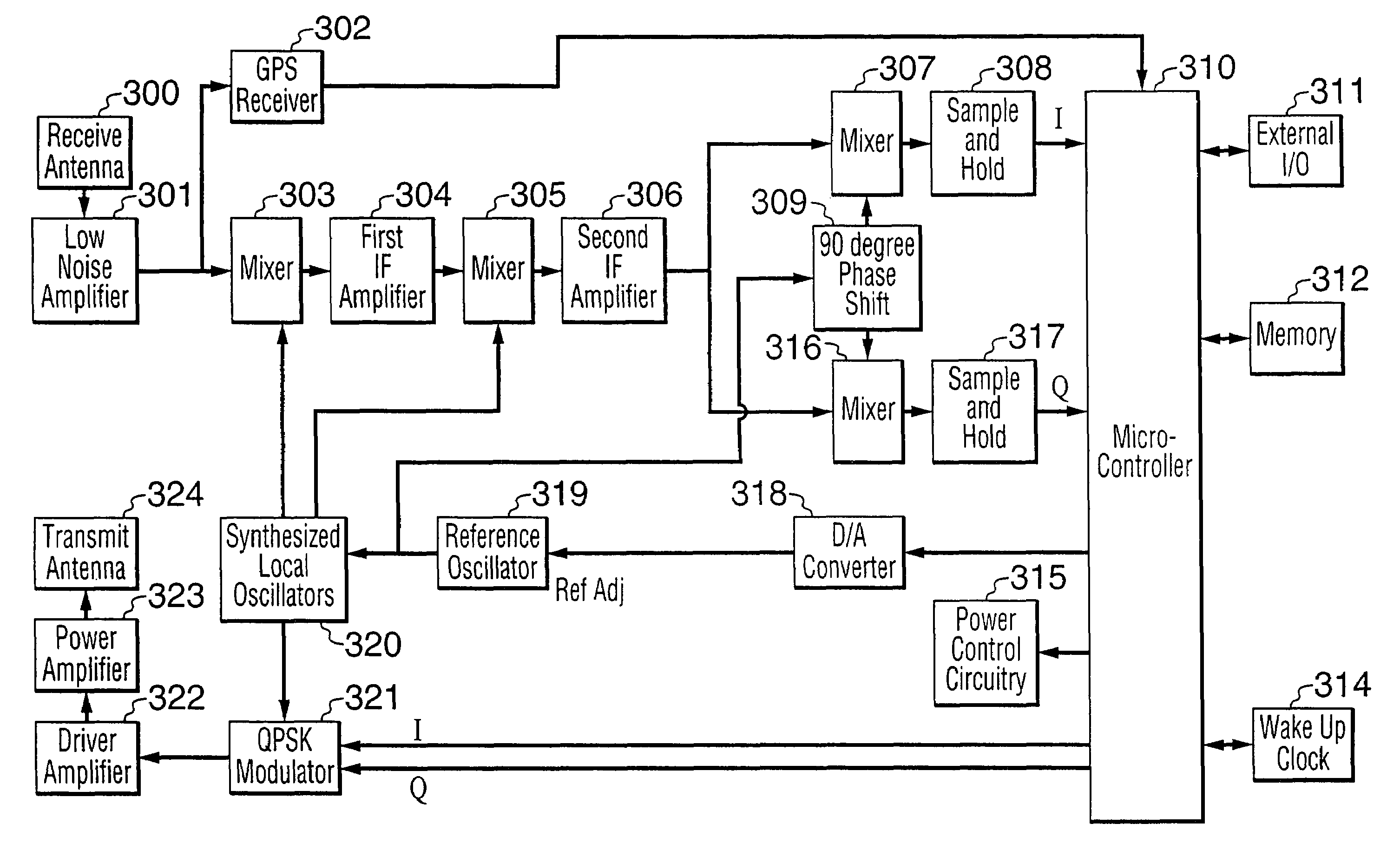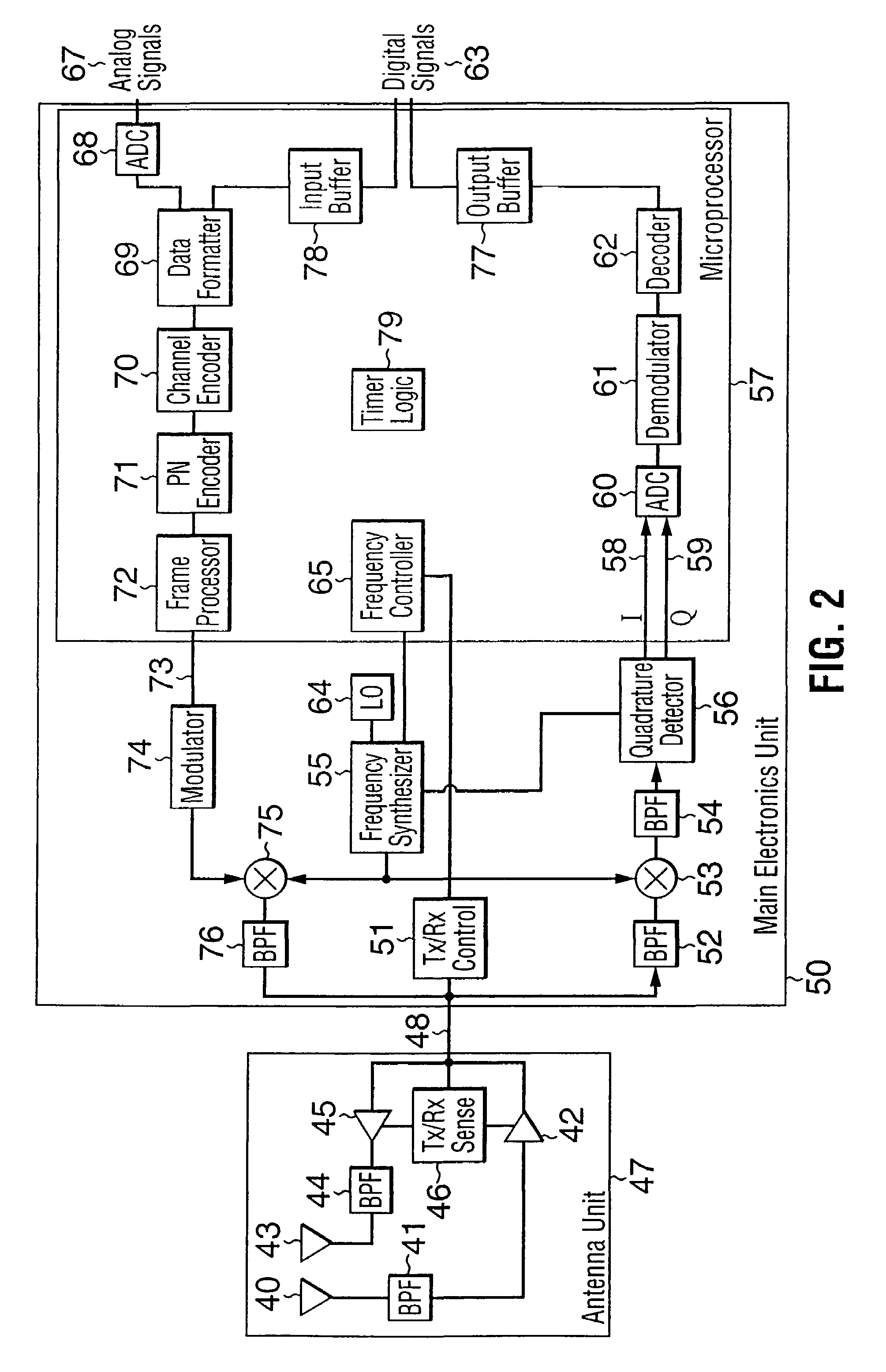Wireless packet data distributed communications system
a distributed communications and packet data technology, applied in the field of wireless communications, can solve the problems of inefficient power use, significant power consumption, and and achieve the effect of saving power consumption at the expense of terminal communication availability, and avoiding loss of terminal communication availability
- Summary
- Abstract
- Description
- Claims
- Application Information
AI Technical Summary
Benefits of technology
Problems solved by technology
Method used
Image
Examples
Embodiment Construction
[0084]Referring now to FIG. 1, the satellite communications system consists of a central Earth station 11 which is connected over a wired connection 12, for example, through a public switched network, to a packet processing center 13, normally operated by a service provider, which in turn is connected over a wired connection path to a value added retailer 14 and ultimately to one or more end customers 15. The packet processing center 13 includes a database 21 that stores information pertaining to the subframes allocated to particular terminals in a manner to be described in more detail below. The PPC 13 also stores beam information when multiple beam satellites are employed.
[0085]The Earth station 11 is also coupled by satellite links 16, 17 to a geostationary multi-beam satellite 18 which relays the signals via links 19 to and from a plurality of remote terminals 20, typically mounted on vehicles, such as helicopters, truck trailers, passenger cars, and rail cars. The satellite 18 ...
PUM
 Login to View More
Login to View More Abstract
Description
Claims
Application Information
 Login to View More
Login to View More - R&D
- Intellectual Property
- Life Sciences
- Materials
- Tech Scout
- Unparalleled Data Quality
- Higher Quality Content
- 60% Fewer Hallucinations
Browse by: Latest US Patents, China's latest patents, Technical Efficacy Thesaurus, Application Domain, Technology Topic, Popular Technical Reports.
© 2025 PatSnap. All rights reserved.Legal|Privacy policy|Modern Slavery Act Transparency Statement|Sitemap|About US| Contact US: help@patsnap.com



